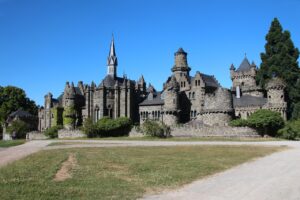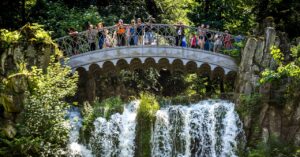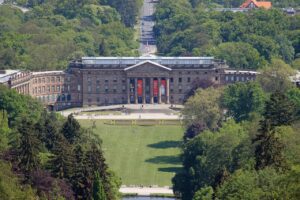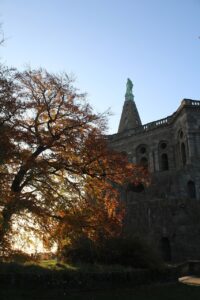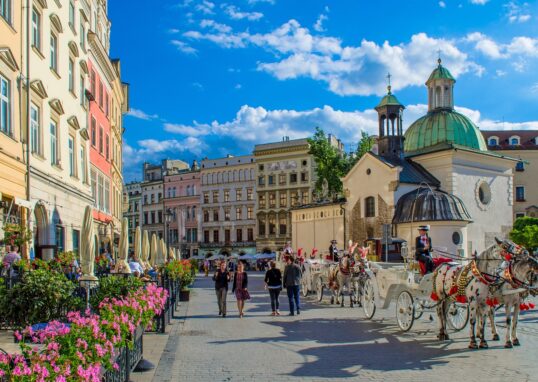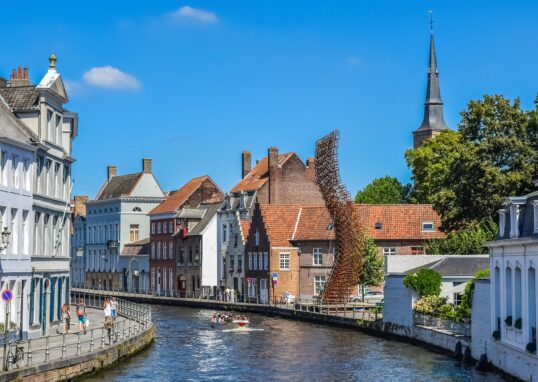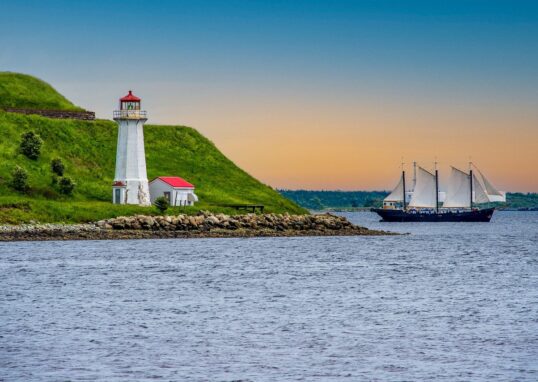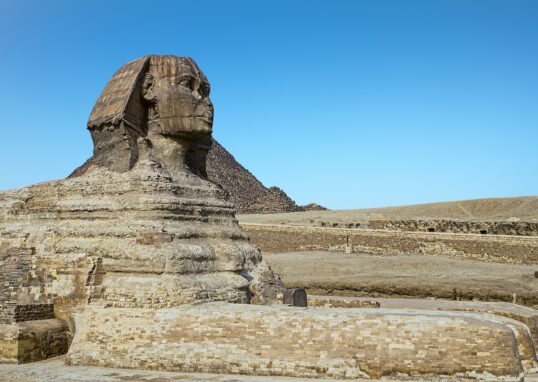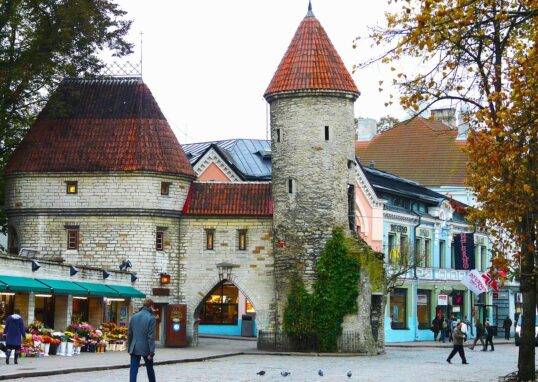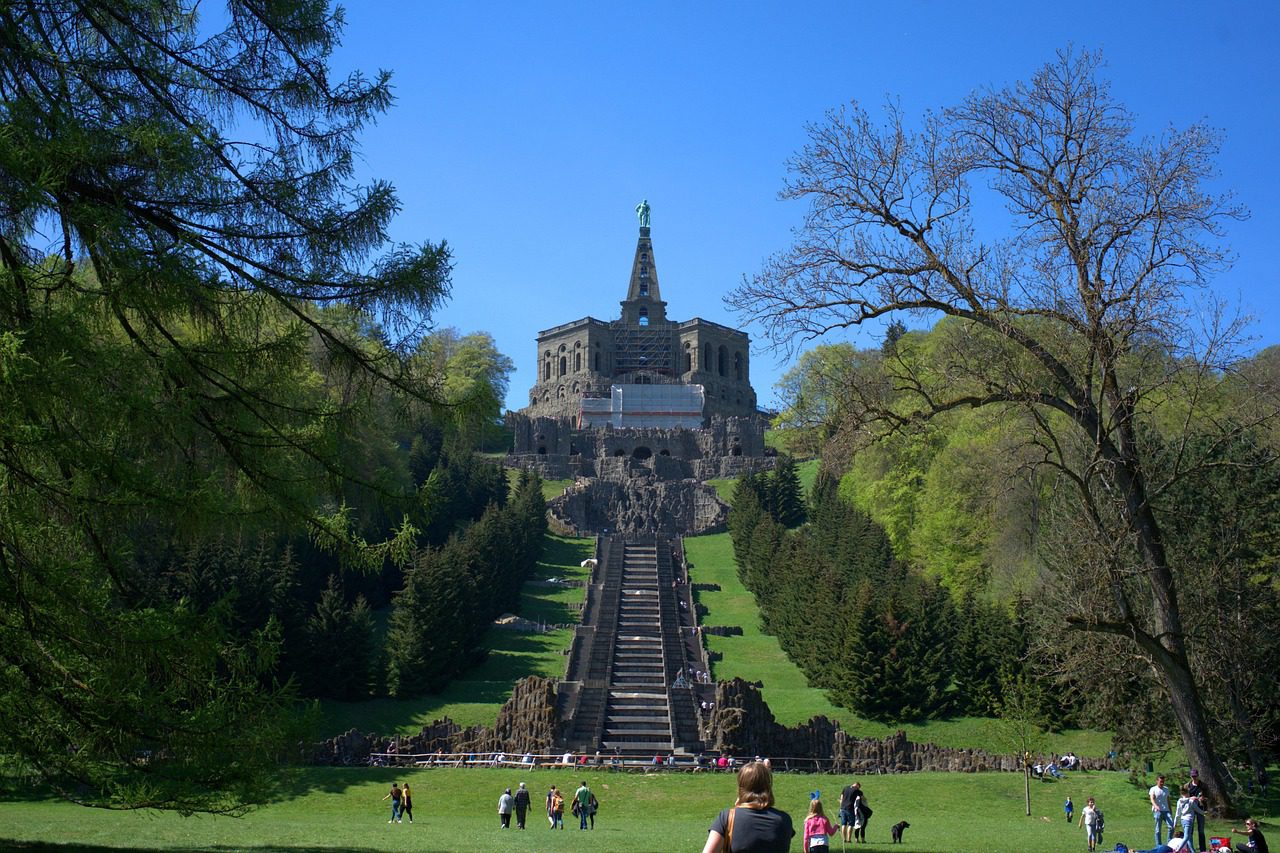
🏞️ Bergpark Wilhelmshöhe: A Masterpiece of Landscape and History
Bergpark Wilhelmshöhe is an imposing landscape park in the city of Kassel in the state of Hesse, Germany. It is also the biggest hillside park in Europe and one of the most impressive UNESCO World Heritage Sites in the world. The park covers a total area of about 2.4 square kilometers and boasts magnificent fountains, baroque palaces, natural beauty, and historic landmarks. “Bergpark” is the German term for “Mountain Park,” and it very well suits it. Built on the slope of the Habichtswald Hills, it offers stunning views of Kassel below. Architecture at the park balances man’s imagination and nature, merging art, architecture, and nature in a lovely harmony. Let’s explore deeper into this magical park — its history, top attractions, art, architecture, and surrounding beauty.
History of Bergpark Wilhelmshöhe
The history of Bergpark Wilhelmshöhe starts in the late 17th century. It was constructed during the reign of Landgrave Karl of Hesse-Kassel in 1696. It was to be a splendid landscape that portrayed the power and good taste of the Kassel rulers.
Early Construction
Landgrave Karl was intrigued by the Italian and French Baroque gardens, such as Versailles. He wanted something similarly grand but adapted to fit the hilly terrain of Kassel. Architects like Giovanni Francesco Guerniero and then Simon Louis du Ry helped lay out the park. The initial plan revolved around water, terraces, and monumental sculpture, especially around the Hercules Monument, the focus of the entire park.
The Era of Transformation
New masters provided new elements in the 18th and 19th centuries. Harsh Baroque style evolved into Romantic and English landscape styles like winding paths, woods, and lakes. The Löwenburg Castle, built by Landgrave Wilhelm IX (later Elector Wilhelm I), gave a fairy-tale like quality to the park. It seemed to be a medieval ruin but was built as a romantic retreat. By the early 19th century, Bergpark Wilhelmshöhe was already a landscape architectural work of art that combined art, architecture, and nature in one exemplary form.
Layout and Design
Bergpark Wilhelmshöhe is not a flat garden; it’s built on a steep hillside that declines about 300 meters from top to bottom. The entire park is based upon the central water axis, which is from the top of the mountain to the palace at the base.
The Central Water Axis
Atop stands imposing Hercules Monument, symbol of the city. Below, water cascades through man-made waterfalls, aqueducts, and pools, creating a magnificent cascade down the mountain. This brilliant design uses gravity to power the fountains — no pumps required! Water naturally collects in reservoirs at the top of the mountain, and when released, it drips downward through the system.
Art and Nature Combined
What makes the park special is the ideal symbiosis of nature and art. The geometric Baroque terraces at higher altitudes towards the top smoothly give way to natural forests and meadows at lower altitudes. Sculptures, grottos, and fountains suddenly spring out along the routes of tourists. The symbiosis of savage and ordered beauty gives visitors a feeling of astonishment and admiration.
The Hercules Monument – The Icon of Kassel
Rising high at the top of the hill, Hercules Monument is the pride of Bergpark Wilhelmshöhe. Built between 1701 and 1717, it is a monument to the Greek myth Hercules, who is the epitome of strength and courage.
Design and Structure
The monument comprises three main elements: The Octagon – an eight-sided stone base structure.
The Pyramid – standing on top of the octagon, creating depth and beauty; The Statue of Hercules – a giant bronze statue around 8.25 meters tall. The building itself is over 70 meters tall, and visible from afar throughout the city.
Meaning and Symbolism
Hercules was chosen because he represents power and human accomplishment. For the Landgrave Karl, the monument symbolized his individual strength as well as political strength. At the top of the platform, visitors enjoy a beautiful panoramic view of Kassel and the countryside. It is hard to climb, but it is well worth it.
The Water Features – The Magic of Flowing Water
Most impressive of all, however, is the water display system of Bergpark Wilhelmshöhe, which has been working for more than 300 years. All the cascades and fountains in the park work by natural pressure and without mechanical pumps’ help.
The Grand Cascade
Under the Hercules Monument lies the Grand Cascade, a series of stone steps where water spectacularly flows down. Each step makes noise and movement, creating an ordinary stream into a waterfall-like spectacle. It ends at the Giant’s Head Fountain, where water shoots out of the giant’s mouth — symbolizing nature’s power.
The Aqueduct and Devil’s Bridge
Further down the hill, the water flows into the Aqueduct, constructed in the form of an ancient Roman ruin. Water drips from broken arches, flowing over cliffs down into the Devil’s Bridge and carving out the Fischtal Valley. These structures were constructed to simulate ruins of bygone days, wholly in the manner of the 18th-century Romantic era.
The Fountain Display
Every Sunday and Wednesday (summer), water shows are performed. Park workers unleash the water at a designated time, and spectators chase after it down the hill, seeing fountains coming to life one by one. The final display finishes with the Great Fountain, which shoots water 50 meters into the air — one of the tallest gravity-fed fountains in the world.
Wilhelmshöhe Palace (Schloss Wilhelmshöhe)
Under the hill is the stunning Wilhelmshöhe Palace, a neoclassic masterpiece that was built from 1786 to 1798. It served as a summer palace of the Hesse-Kassel rulers and afterwards as a holiday home of German Emperor Wilhelm II.
Architecture and Style
The palace was designed by Simon Louis du Ry, and it’s a combination of Greek and Roman. It consists of a very large middle section called the Museum Wing, two wings on either side, and a big colonnade. The building is made of sandstone, and therefore it has a yellowish golden color that glows in the sun in the afternoon.
Inside the Palace
The palace, in the present day, contains the Gemäldegalerie Alte Meister (Old Masters Gallery), which is Germany’s largest art museum. The palace contains paintings of Rembrandt, Rubens, Van Dyck, Albrecht Dürer, and Poussin. There are also sections of the palace containing classical sculptures, historic furniture, and royal treasures. The rooms were reconstructed in great detail to recreate the elegant 18th and 19th-century life.
The Palace Gardens
It is surrounded by gardens, lawns, and forest walks. Picnics or peaceful walking are enjoyed by tourists here. It is peaceful, with the distant sound of water from the cascading above.
Löwenburg Castle – The Romantic Ruin
Concealed deep within Bergpark Wilhelmshöhe lies the Löwenburg Castle, also known as the Lion’s Castle. Built between 1793 and 1801, it was designed to resemble a medieval castle with towers, walls, and battlements
Purpose and Design
As a visual representation of medieval Europe, it differs from the actual medieval castles in that Löwenburg was built as a romantic fantasy of Landgrave Wilhelm IX. It was meant to symbolize the romantic atmosphere of the times, a mixture of nostalgia and imagination. Interior decoration was luxuriantly adorned with tapestries, armor, and stained glass. It also served as a personal retreat and later as a burial site for the Landgrave.
Touring the Castle
Visitors can stroll through the courtyards, chapel, and gardens of the castle. The views of the forest and surrounding park from its towers are great. Everything is fairy-tale-like.
The Natural Landscape and Flora
Bergpark Wilhelmshöhe is as much about architecture as it’s nature paradise too. The park landscape has forests, meadows, lakes, and waterfalls all set in a pleasing combination.
Flora and Fauna
There are numerous varieties of trees in the park, including oak, beech, chestnut, and maple. In the spring, there are flowers in bloom with vibrant colors, whereas autumn colors the hills with red and gold. Deer, birds, and rodents are common sightings on the walking trails.
Walking Trails and Views
There are miles of hiking and walking trails that wind their way through the woods. Some are steep, others easy to walk. The higher you go, the more breathtaking the views. Bench and lookouts are placed strategically to offer moments of tranquility in which to rest and rejuvenate.
UNESCO World Heritage Site
In 2013, Bergpark Wilhelmshöhe was included in UNESCO’s register of World Heritage Sites for its groundbreaking combination of art, architecture, and hydraulic engineering. UNESCO has described it as a work of European garden art, a product of centuries of human imagination and technical skill. Its recognition ensures the protection and preservation of the park for generations to come.
Things to Do in Bergpark Wilhelmshöhe
- Tour the Water Show – Follow the flow of water from the Hercules Monument to the Great Fountain.
- Tour the Palace Museum – Uncover fine art and regal history.
- Ascend the Hercules Monument – Enjoy panoramic views of Kassel.
- Stroll through Löwenburg Castle – Experience the enchantment of a medieval dream.
- Take a Nature Hike – Uncover secluded waterfalls and peaceful paths.
- Unwind in Café Herkules – Savor local treats and fountain views.
The park remains open throughout the year, but spring to fall is the ideal time to visit, with the fountains functioning and the weather pleasant.
Surrounding Places Near Bergpark Wilhelmshöhe
The environs around Bergpark Wilhelmshöhe in the Kassel area have numerous attractions for tourists. Let’s discuss some of them:
Kassel City Center
A few kilometers away from the park is Kassel’s city center, abounding with restaurants, shops, and cultural landmarks. The Fridericianum Museum, constructed in 1779, is one of the oldest public museums in Europe and houses the Documenta Art Exhibition, which takes place every five years. Another beautiful location close by is the Orangerie Palace in Karlsaue Park, which is adorned with gardens and fountains. The palace used to be used for royal gatherings and today hosts an astronomy museum.
Habichtswald Nature Park
Extending around Bergpark Wilhelmshöhe is the Habichtswald Nature Park, a massive forested area ideal for walking and cycling. The park includes vantage points, wildlife walks, and picnic areas. The Essigberg Observation Tower has a wonderful view of the whole Kassel region.
Grimm World (GRIMMWELT Kassel)
Kassel has strong associations with the Brothers Grimm, the legendary tellers of fairy stories such as Cinderella and Hansel and Gretel. The Grimm World Museum commemorates their work and life with interactive displays and manuscripts.
Karlsaue Park
Located on the eastern edge of Kassel, the Karlsaue Park is a level baroque garden that features lakes, statues, and an orangery. It’s perfect for taking a leisurely walk or for boating.
Wilhelmsthal Palace
Approximately 12 kilometers from Kassel stands the lovely Wilhelmsthal Palace, which is a summer palace with wonderful gardens surrounding it. It’s also known as the “little Versailles of Hesse.”
Marburg
Only a short drive away, the medieval old town, castle, and historic streets of Marburg await. It’s a great day trip from Kassel.
Conclusion
Bergpark Wilhelmshöhe is a living masterpiece — a place where nature, art, and history meet. From the heroic Hercules Monument to the romantic traces of Löwenburg Castle, there’s a story in every corner. Its water features are not just breathtaking but a reflection on human ingenuity and engineering genius. Visitors can walk through centuries of fashion, from severe Baroque lines to wild Romantic curves. Surrounded by Kassel’s cultural landmarks, Grimm fairy stories, and rolling hills, Bergpark Wilhelmshöhe is not just one of Germany’s greatest treasures — it’s a universal marvel that still sparks the imagination of everyone who sees it.

